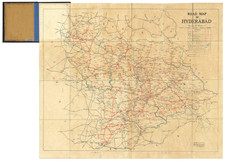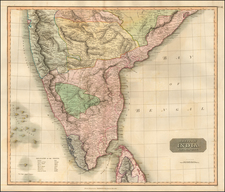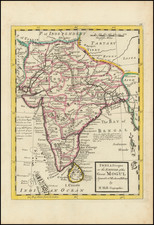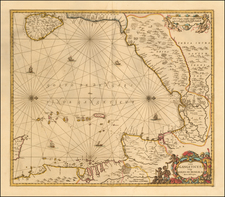Detailed Chart of Bombay Harbor, first published by William Heather in 1803 and revised by J.W. Norie in 1815 and again in 1820.
The Heather-Norie chart of Bombay Harbour is a remarkable amalgam of information, including the latest sailing details, lighthouses, soundings and other practical information for navigation, along with a number of fantastic profile views, most notably
- Appearance of Coulaba Island bearing east (showing a fine profile view of the fort)
- View of the Entranceto Cheul (with finely engraved structures visible on both sides of the entrance)
There are also a number of topographical features shown on the map. The note references the existence of a Vessel generally stationed at the Sunken Rock during the S.W. Monsoon.
This chart would seem to be the first significant update from William Nichelson's 8 sheet chart of the harbor, published in 1763.
The chart is an exceptional rarity. We note no other examples on OCLC, at auction or otherwise.
John William Norie (1772 – 1843) was a publisher of nautical books held in high regard by his contemporaries. He also specialized in nautical charts and was a mathematician. Norie was born in Wapping, London, the eldest of eight children.
Norie had an apptitude for navigation and chart making. His first work was published in 1796, The Description and Use of Hadley's Quadrant, by William Heather, a chart and instrument seller. Heather then took Norie on as a chart maker and allowed him to run a nautical academy out of Heather's premises on Leadenhall Street. He continued to work for Heather, working out of his shop.
Norie published many works, but the most famous were A Complete Set of Nautical Tables (1803) and the Epitome of Practical Navigation (1805). Both were reissued throughout the nineteenth century, usually together. The Tables are still issued today. The Epitome became the standard work on navigation; it was so famous that authors C. S. Forester and Jack London both mention the book in their fiction. In addition to the Epitome, Norie wrote the The shipwright's vade-mecum (1822), Plates Descriptive of the Maritime Flags of All Nations (1838), and The naval gazetteer, biographer, and chronologist; new and improved (1842). He also provided pilots with charts that covered practically the entire world's seas--the famous blue-back charts.
Norie partnered with a financial backer, George Wilson, to buy Heather's business upon Heather's death in 1813. In addition to the nautical academy and the copyright to his books, Norie prospered from the growing business, which he managed. The shop, operating under the sign of the Wooden Midshipman, was called the Navigation Warehouse. It featured in Charles Dickens' Dombey and Son.
Norie retired in 1840. He sold his shares in the business and moved to Edinburgh. He died there, at the age of 71, on Christmas Eve 1843. His company was renamed Norie & Wilson after his retirement. In 1903, the firm merged with rivals and became Imray, Laurie, Norie & Wilson. It is still in business today.









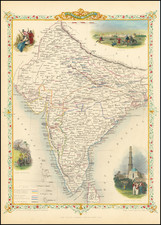
![[ Indian Ocean - Sailing to Batavia ] Route Exacte De Gamron a Batavia et de Batavia a Gamron](https://storage.googleapis.com/raremaps/img/small/44380.jpg)
